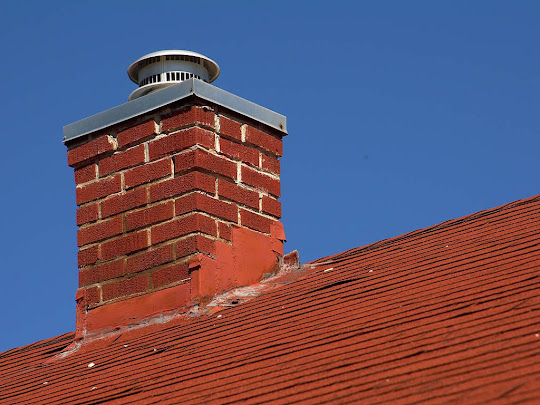Everything You Need to Know About Chimney Tuckpointing
Tuckpointing is the process of repairing the mortar between bricks or stones in a masonry structure. It involves removing damaged or deteriorated mortar from between the bricks or stones and replacing it with fresh mortar. Tuckpointing is important for several reasons, especially when it comes to the chimney.
Chimneys are an essential part of any home with a fireplace or wood stove. They are designed to vent smoke and gases from the fire out of the home, keeping the occupants safe and healthy. Over time, however, the mortar between the bricks or stones in a chimney can become damaged or deteriorated, which can cause a variety of problems. One of the most significant problems caused by deteriorating mortar in a chimney is water infiltration. Water can seep through the cracks and gaps in the mortar, causing damage to the chimney and potentially causing water damage to the home’s interior. Water can also freeze inside the chimney during the winter months, which can cause the bricks or stones to crack or break apart.
Tuckpointing services are necessary to prevent these problems from occurring. By repairing the mortar in a chimney, tuckpointing can help prevent water from seeping into the chimney and causing damage. It can also help prevent hot gases and sparks from escaping through cracks in the mortar, reducing the risk of fire.
Tuckpointing can be a time-consuming and labor-intensive process, depending on the size and condition of the chimney. However, it is a necessary process to keep the chimney in good condition and prevent potential problems. In addition to repairing the mortar in a chimney, tuckpointing can also help improve the overall appearance of the chimney. Over time, the mortar in a chimney can become discoloured or stained, which can detract from the chimney’s appearance. Tuckpointing repair can help restore the chimney’s original appearance, making it look new again.
How is tuckpointing done?
The basic idea of tuckpointing is to remove damaged or deteriorated mortar from between bricks or stones and replace it with new mortar that matches the original colour and texture of the existing mortar. The process involves carefully grinding out a small section of the old mortar to a consistent depth and width, creating a groove between the bricks or stones. Then, a new mortar mixture is applied to the groove, pressing it tightly into place with a trowel. Once the mortar has set, the excess is scraped away, leaving a clean and smooth joint that blends in with the surrounding masonry.
The process involves several steps, which are outlined below:
Inspection: The first step in tuckpointing is to inspect the chimney to determine the extent of the damage and identify the areas that require repair. The contractor will examine the mortar joints between the bricks or stones and check for signs of cracking erosion, or other damage.
Preparation: Before the tuckpointing process can begin, the contractor will prepare the chimney by removing any loose debris or damaged mortar from the joints using a chisel or grinder. This ensures that the new mortar will adhere properly to the existing masonry.
Mixing the mortar: The next step is to mix the new mortar. The mortar should be made with a combination of sand, cement, and water to match the colour and texture of the existing mortar.
Applying the mortar: Once the mortar is mixed, the contractor will apply it to the joints using a trowel.
Smoothing the mortar: After the mortar is applied, the contractor will use a tool called a jointing tool to smooth the mortar and create a concave shape in the joint. This helps to ensure that the new mortar blends seamlessly with the existing masonry and helps to prevent water from penetrating the joint.
Finishing: Finally, the contractor will clean any excess mortar from the surface of the bricks or stones using a brush or sponge. They may also use a wire brush or grinder to create a textured finish that matches the surrounding masonry.


.jpg)
.jpg)

Comments
Post a Comment